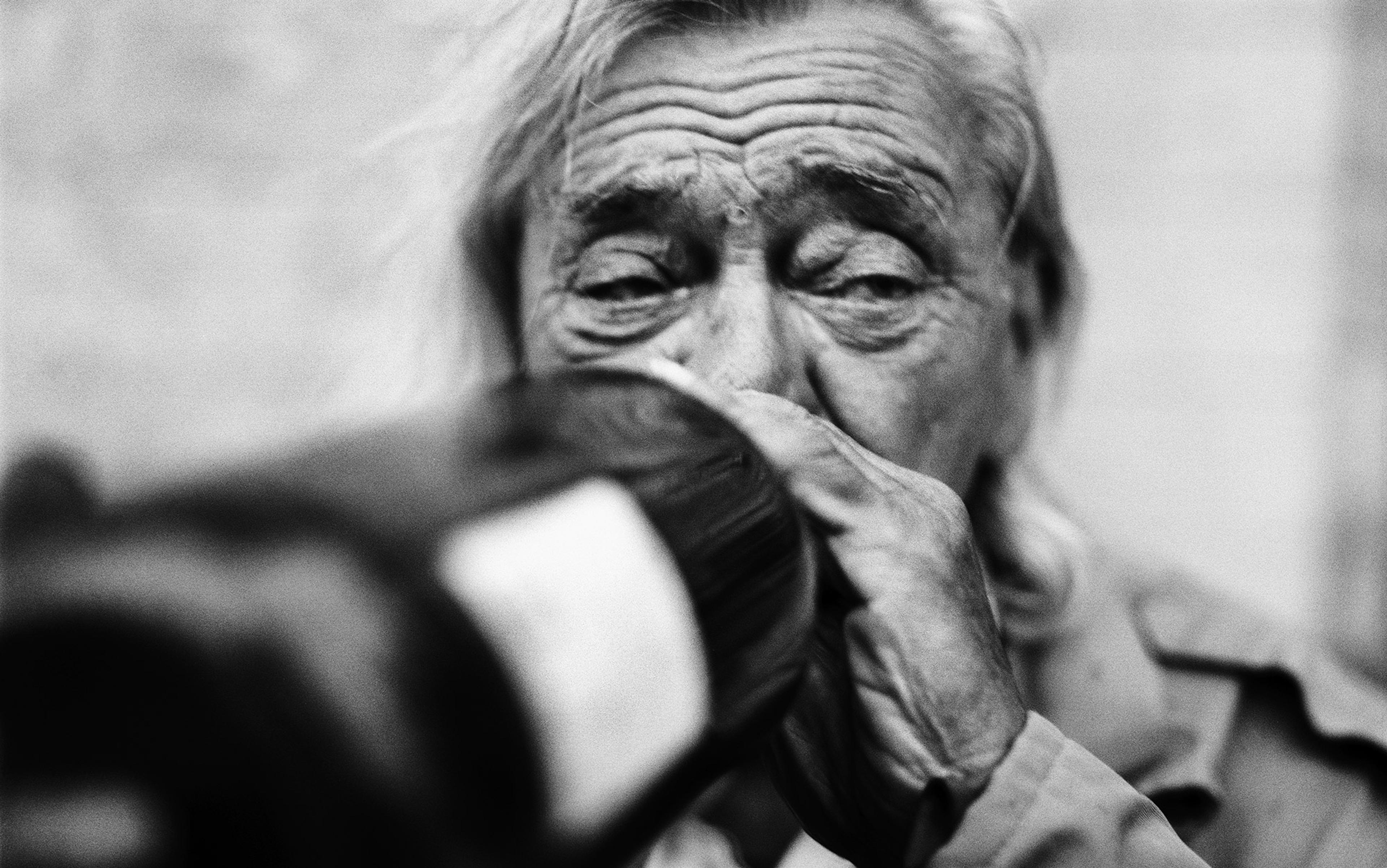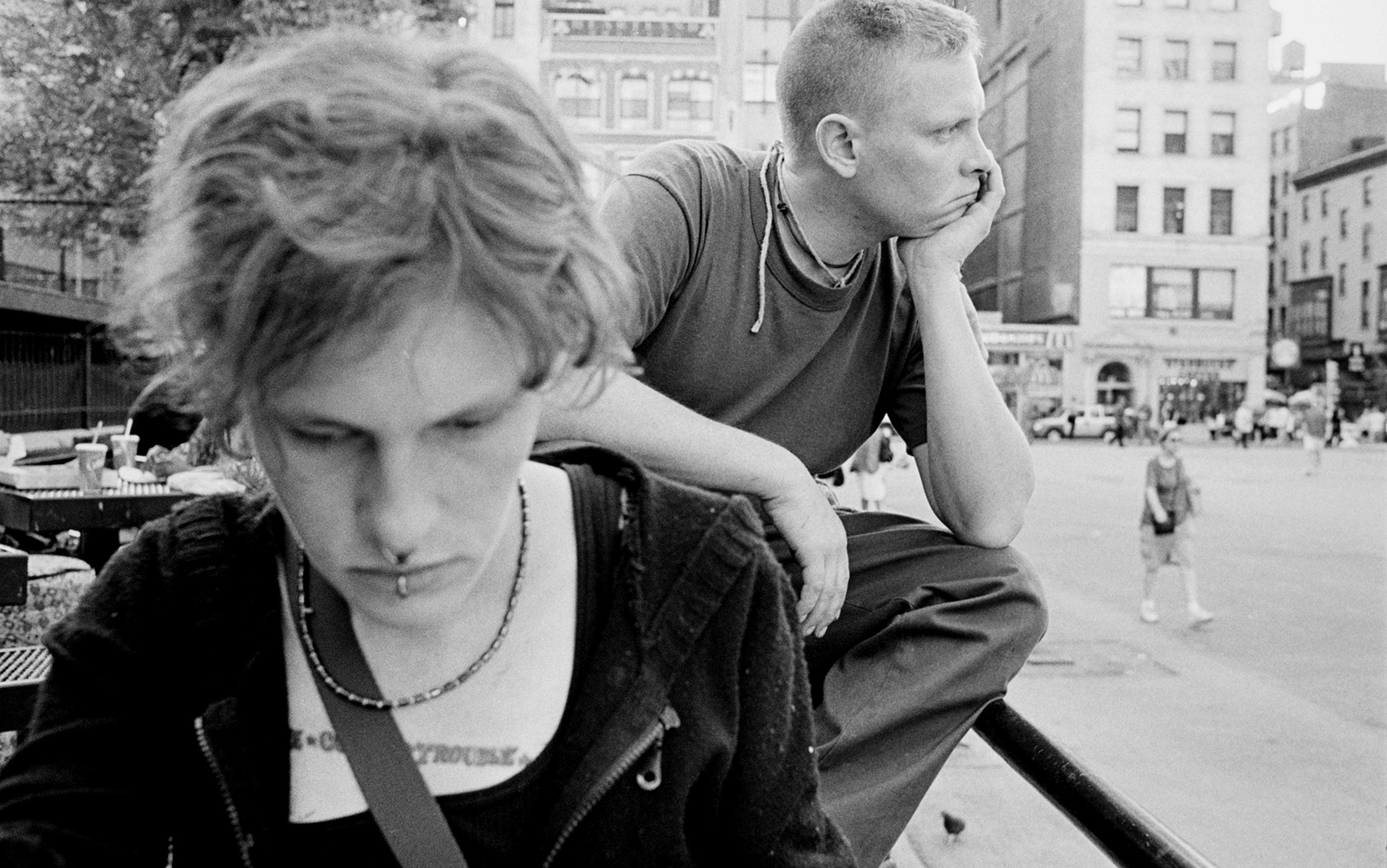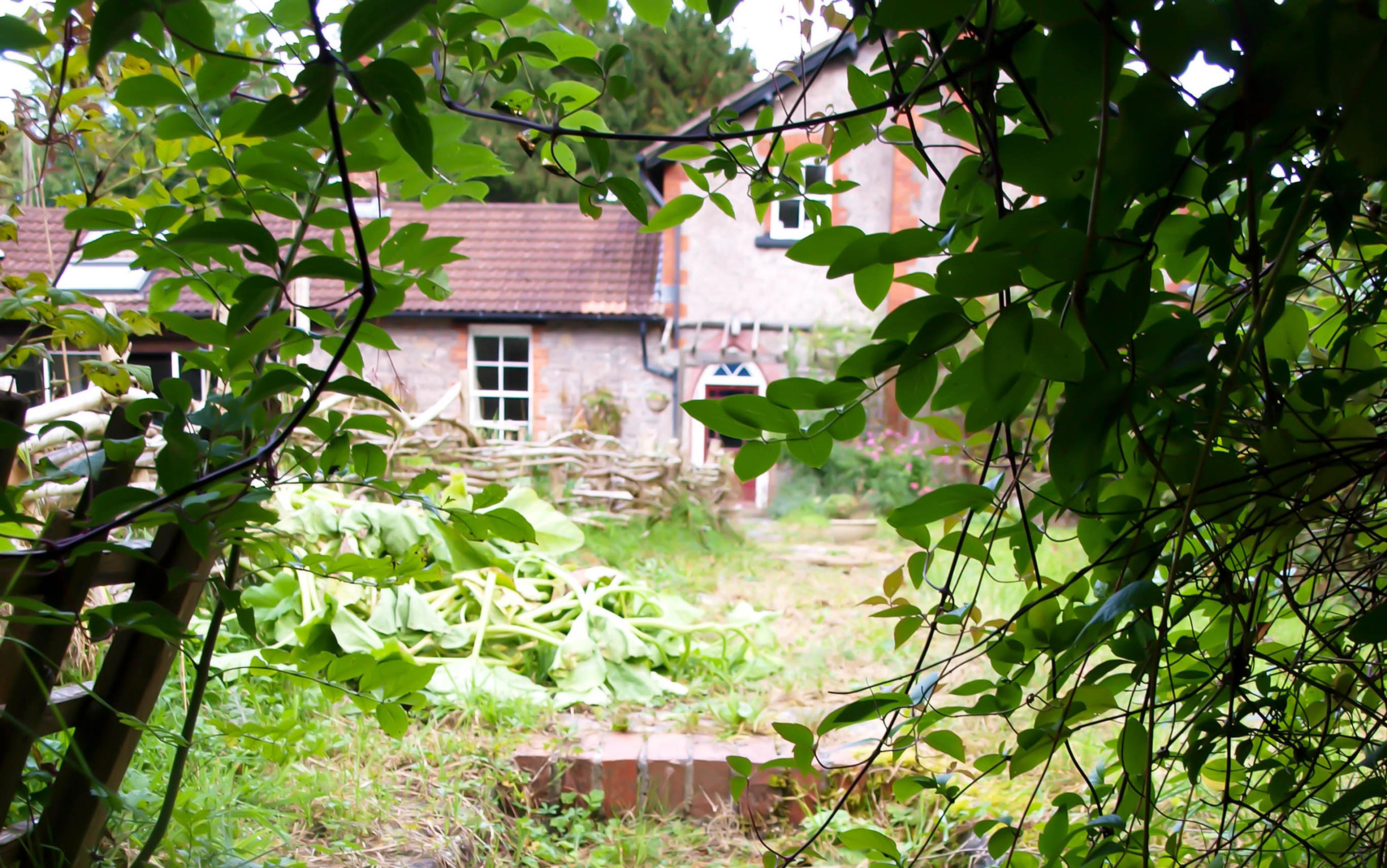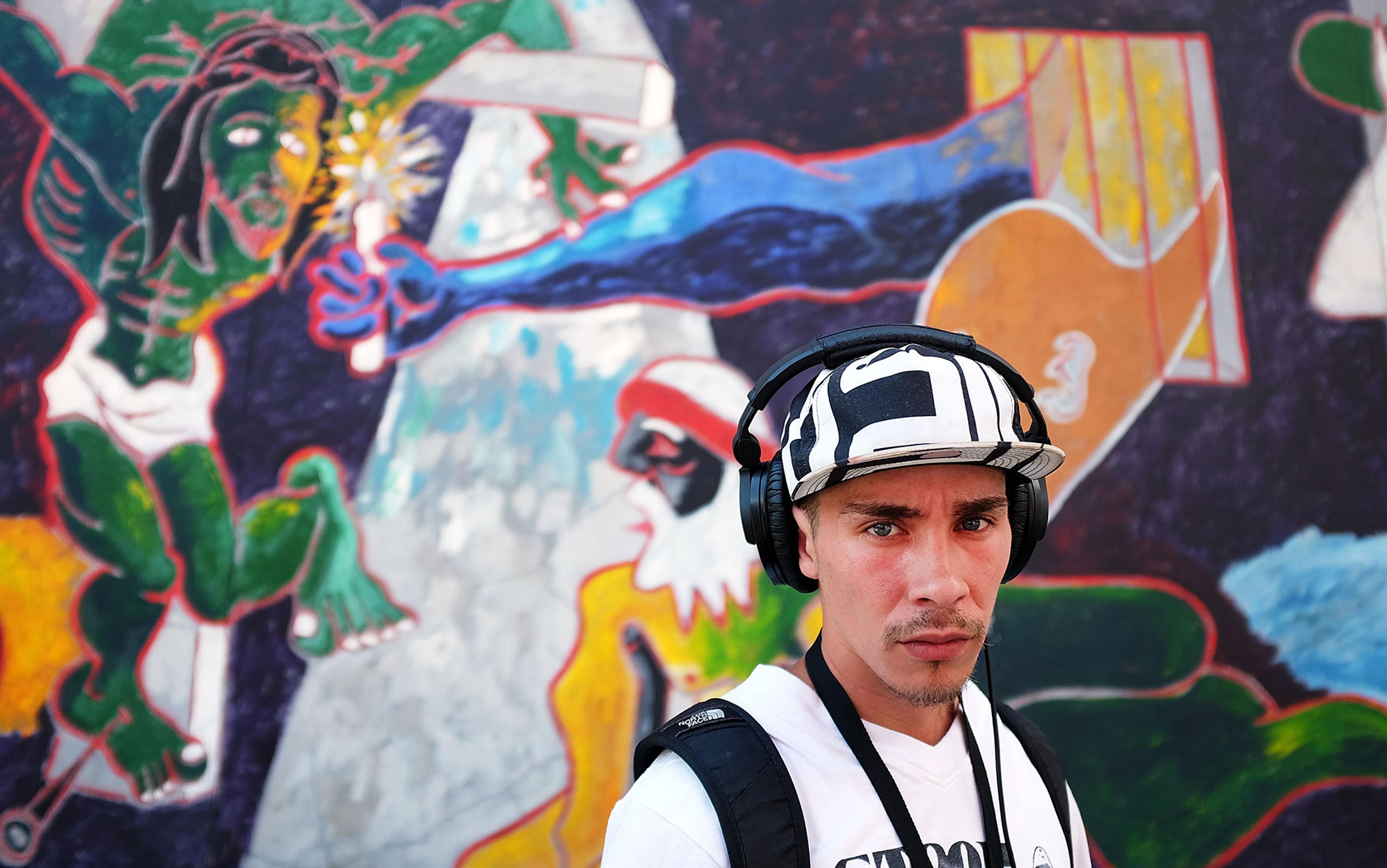Three years ago, I put out a call to my blog community: would anyone be willing to tell me the story of their addiction, from start to finish, in all of its gory detail, for the book I am writing? The book would combine an account of brain change in addiction with subjective descriptions of what it’s like to live inside addiction. More than 100 people replied. Two years later, I’d recorded intimate biographies of a heroin addict, a meth addict, an alcoholic, a pill-popper and someone with an eating disorder, and my book The Biology of Desire was published in 2015.
I already knew a lot about addiction. I had struggled with my own drug compulsion, back in my 20s, and lost most of what I valued as a result. But then I quit, returned to university, earned a PhD in developmental psychology, and went on to become a professor at the University of Toronto. For more than 20 years, I researched the emotional development of children and adolescents. And after 10 of those years, I switched my focus to brain science, since the broad brushstrokes of psychology couldn’t quite capture the concrete, biological factors that interact to create our personalities. When I returned to addiction, it was as a scientist studying the addicted brain. The data were indisputable: brains change with addiction. I wanted to understand how – and why. I wanted to understand addiction with fastidious objectivity, but I didn’t want to lose touch with its subjectivity – how it feels, how hard it is – in the process.
The suffering, the intense effort, failure and eventual triumph I remembered from my own years of addiction coursed through each of the biographies I collected. Each revealed the agonising counterpoint of fear and shame sculpted by addiction. For example, Donna described the strange conceit that came with her talent as a pill thief, until she was caught rummaging through drawers by family members primed by suspicion. Donna cared for children with severe illnesses in a Los Angeles hospital; friends and coworkers thought her a saintlike being, overflowing with generosity and competence. What they did not see was her overflowing hunger for opiate painkillers – the special treats she saved up for after work and weekends.
Donna continued to steal pills from friends and relatives, forge doctors’ prescriptions, and raid her husband’s painkiller supply to achieve that precious buzz. She developed compelling rationalisations as to why she deserved this vacation from her high-stress life. And finally she was caught red-handed by a video camera set up in her mother-in-law’s bedroom – an event that precipitated massive trauma, fear of abandonment, and then months of intensive therapy.
What Donna and the other very different people I spoke with had in common was what all addicts find most maddening (and terrifying) about addiction: its staying power, long after the pleasure has worn off, long after the relief has transformed into extended anxiety, long after they’ve sworn up and down, to themselves and others, that this would not continue. It’s that resilience that has made addiction so incomprehensible to addicts, their families and the experts they turn to for help, while feeding a firestorm of clashing explanations as to what it actually is.
One explanation is that addiction is a brain disease. The United States National Institute on Drug Abuse, the American Society of Addiction Medicine, and the American Medical Association ubiquitously define addiction as a ‘chronic disease of brain reward, motivation, memory and related circuitry’ – a definition echoing through their websites, lectures and literature, and, most recently, ‘The Surgeon General’s Report on Alcohol, Drugs, and Health’ (2016). Such authorities warn us that addiction ‘hijacks the brain’, replacing the capacity for choice and self-control with an unremitting compulsion to drink or use drugs. In the UK, the medical journal The Lancet has provided a forum for figurehead proponents of the brain-disease model, echoing the government’s emphasis on ‘withdrawal symptoms, tolerance, detoxification or alcohol-related seizures’, which suggests that the royal road to understanding addiction is still medicine.
This mania for medicalisation has been evolving for decades, an outgrowth of the strange marriage between support groups such as Alcoholics Anonymous (AA) and institutional care. It became the dominant approach to addiction throughout the Western world in the 1990s – the so-called decade of the brain – largely due to the discovery of brain changes that correspond with addiction, some of them long-lasting if not permanent.
If addiction changes the brain and drugs cause addiction, the argument went, then perhaps drugs unleash pathological changes, literally damaging neural tissue. The implication that addicts do the things they do because they are ill, not because they are weak, self-indulgent, spineless pariahs (a fairly prevalent view in some quarters) also seemed to benefit addicts and their families. The anger and disgust they often experienced could be mitigated by the presumption of illness; and social stigmatisation – known to compound the misery of those with mental problems – could be relieved, even reversed, by the simple assumption that addicts can’t help themselves.
If only the disease model worked. Yet, more and more, we find that it doesn’t. First of all, brain change alone isn’t evidence for brain disease. Brains are designed to change. That is their modus operandi. They change massively with child and adolescent development: roughly half the synapses in the cortex literally disappear between birth and adulthood. They change with learning, throughout the lifespan; with the acquisition of new skills, from taxi-driving to music appreciation, and with normal ageing. Brains change with recovery from strokes or trauma and, most importantly, they change when people stop taking drugs.
AA has long overwritten the notion of self-generated change with that of vigilant control: once an addict, always an addict
Secondly, we now know that drugs don’t cause addiction. People become addicted to gambling, porn, sex, social media, gaming, shopping and of course food; many of these dependencies are now classed as ‘disorders’ in the canonical (but controversial) Diagnostic and Statistical Manual of Mental Disorders (DSM). Moreover, the brain changes observed in drug addiction look the same as those underlying these ‘behavioural’ addictions. What is particularly interesting to me is that brain changes in addiction also resemble those underlying sexual attraction and romantic love: the brain restructures itself, at least to an extent, when attraction runs high.
The supposed social and clinical benefits of the disease model are equally unconvincing. For one thing, psychiatric patients report that the ‘illness’ label causes more stigma, not less. We might not want to sit next to someone in the waiting room if they have a ‘mental illness’. But someone with an ‘emotional problem’ doesn’t seem so very different from members of our own group or family, or even from ourselves. More intriguingly, a number of studies have shown that the belief that addiction is a disease actually decreases the odds of sustained recovery. AA has long overwritten the notion of self-generated change with that of vigilant control: once an addict, always an addict, so watch out!
No doubt the fellowship aspect of 12-step groups is valuable, but there’s little indication that the presumption of a life-long flaw facilitates recovery. Expensive private rehabs don’t do much better, partly because their core programmes still revolve around 12-step methods, with an overlay of medical supervision. Because relapse rates are so high, both in AA and in private rehabs, addicts continue to feel the burden of shame, isolation and rejection. Something fundamental about our treatment philosophy has to change. Yet the disease model seems to lock it in place.
So what are the alternatives? One idea is that addicts voluntarily choose to remain addicted: if they don’t quit, it’s because they don’t want to. Anyone who has spent even a little time with someone struggling with addiction can see the shallowness of this view. The other contender is the idea that addiction develops, it is learned, which might make it similar to other detrimental behaviour patterns: racism, religious extremism, obsessive involvement with sports or tattoos, or with romantic partners who aren’t working out, or might even be abusive. Addiction might be hard to give up because it is so deeply learned – or learned in urgent circumstances – while alternative means for arranging one’s life are not.
The view that addiction arises through learning, in the context of environmental forces, appears to be gathering momentum. An international policy group of more than 50 scholars, researchers, policy advisers and treatment professionals was coordinated earlier this year by the British researchers Derek Heim and Nick Heather, specifically to oppose the ‘brain disease model’. This group, the Addiction Theory Network, emphasises the social and psychological factors that promote addiction. And although some group members ignore the biology of addiction, presumably to distance themselves as far as possible from the disease model, others (myself included) view brain change as essential to learning addiction. After all, how do we learn anything except by modifying the connections in our brains?
Yet the question remains: if addiction is learned, how does it become so much more crystallised, entrenched, in fact stuck, than other learned behaviours? Given that what we learn we can often unlearn, why is addiction so hard to get rid of?
Johnny is an intelligent man. He knew what he was doing. So why couldn’t he stop?
Johnny was a British plant manager, and his childhood included several years in a boarding school where sexual abuse by clergymen lurked insidiously behind the rustlings of bedtime. Johnny grew up anxious but competent; he married, then divorced, and enjoyed regular visits with his grown children – a relatively normal and predictable life. Until it all unravelled. His friends and business associates found it hard to watch, and impossible to interfere, as Johnny approached end-stage alcoholism. He drank himself so close to death that his first reaction to waking up was surprise. By the final six months, Johnny’s days acquired a strange rhythm. They began with a walk to the fridge, rum and ice already crackling by the time he got to the toilet. They would end when he crawled to bed on his hands and knees, unable to stand. After a few hours’ sleep, there’d begin another ‘day’ of drinking, which lasted only until his next collapse. Johnny told me he would have committed suicide, but it was happening by itself.
Why was it so hard to overcome this behaviour pattern when it got close to destroying him? Why the horrendous sameness, the insidious stability in his habits, in his life? Johnny is an intelligent man. He knew what he was doing. So why couldn’t he stop? These are the questions that a learning model of addiction has to answer.
We often think of learning in terms of skill-learning. Language, self-control, bike-riding, algebra, table manners and playing the piccolo are such skills. But we also learn habits such as nail-biting, TV-watching and folding our napkins a certain way. A focus on habits is distinct from a focus on skills: loosely speaking, habits are acquired without intention; skills are acquired deliberately. But do they differ in other ways?
I happen to be polishing up this essay on a farm in Australia and I’ve just had the pleasure of hanging out with a large group of cows. When the cows are led along a ramp-like corridor, to be weighed in a small outdoor vestibule, they hesitate for a moment, then either follow the cow in front or else turn around and push back against the others to return to their familiar paddock. Different cows handle the situation differently, but my hosts could easily predict which cows would pursue which course of action. Based on temperament and experience, these cows behaved according to habits they had learned. I saw no indication of skills.
I would call addiction a habit. In fact, the word ‘habit’ has been used to describe addiction for ages. Yet habits can be hard to specify. They don’t just show up in behaviour. Racism is a habit that’s invisible until it shows itself in a particular context. Like racism, empathy, misogyny, patriotism, selfishness and selflessness, I would term addiction a ‘habit of mind’ – a habit of thinking and feeling that sometimes gets expressed in behaviour. But then how can we possibly discern habits that we can’t identify (in behaviour)? Let’s look to the brain to find out.
From a neural perspective, habits are patterns of synaptic activation that repeat, when connections among rapidly firing neurons fall into the same pattern over different occasions repeatedly. When a person thinks familiar thoughts or performs familiar actions, a vast number of synapses become activated in predictable – ie, habitual – configurations. Patterns of neural firing in one region become synchronised with patterns of firing in other regions, and that helps the participating synapses form these habitual configurations. Whether you call something a skill or a habit, it can become learned and entrenched only by virtue of repeating patterns of synaptic activation.
With each repetition, activated synapses become reinforced or strengthened (due to modifications in the structure of each participating neuron), and alternative (less used) synapses become weakened or pruned. Meanwhile, active synapses give rise to the activation of other synapses with which they’re connected, and because synaptic connections between brain cells are almost always reciprocal, the reinforcing activation is returned. Thus, repeated patterns of neural activation are self-perpetuating and self-reinforcing: they form circuits or pathways with an increasing probability of ‘lighting up’ whenever certain cues or stimuli (or thoughts or memories) are encountered. In neuroplasticity researcher Siegrid Löwel’s summation of neuropsychologist Donald Hebb’s rule: ‘Cells that fire together, wire together.’
Particular neural regions have been singled out as critically important in addiction, and I’ve spent years studying them. But we don’t have to parse the brain into regions in order to understand addiction as neural habit-formation. Many regions of the forebrain are highly plastic or ‘programmable’ – and the tendency for firing patterns to be repeated and strengthened, crystallised and concretised, is a general principle, applicable throughout the cortex and limbic systems. In fact, it is a principle far more general than that, as it applies to all natural complex systems, in which structure evolves and consolidates, without being programmed from outside.
Cities stabilise. Cultures stabilise. Even family dynamics stabilise. Family arguments inevitably repeat the same infuriating script
All living systems, from organisms to societies, ecosystems to brains, are complex systems. Most important, they are self-organising systems. That means that their structure, their shape and organisation, emerges from the interaction of many components that change each other over time. Those changes invoke a number of fascinating principles but, for our purposes, the most important feature of these systems is that they self-organise; their structure is self-perpetuating, due to recurrent interactions among their elements – little feedback loops.
It so happens that there is a robust scientific language for understanding habit-formation in self-organising systems, centred on the term ‘attractor’. An attractor is simply a stable state in a complex (dynamic) system. So: seeds grow into trees and then stabilise to an attractor: the tree acquires a shape. Birds fly in sync with each other and form a V-shaped (or other-shaped) flock. Ecosystems go through periods of massive change (eg, speciation and species death) and then stabilise. Cities stabilise. Cultures stabilise. Even family dynamics stabilise. Family arguments inevitably repeat the same infuriating script.
Complex systems are epitomised by elements such as individuals in a society or ecosystem, or cells in an organ or organism. These elements continue to interact – they cause changes in each other, which cause further changes in each other, and so forth – until they arrive at stable states, at least for a while. (And note that we are not talking about the stability of a rusty roller skate lying in a ditch or a billiard ball that’s stopped moving. We are talking about stability in a system that continues to grow and change – as all natural complex systems must do.)
So what’s the point of a word such as ‘attractor?’ What does it offer us? Complex systems such as us and our brains reach stability in a very different way from roller skates or billiard balls. They have not lost their energy; they continue to grow and develop, to live. But for some period of time, the feedback loops that comprise them remain in sync, promoting steadiness or balance, like your body temperature after you’ve gotten used to a blast of wintry air. (Technically, this means that negative feedback rather than positive feedback now characterises system dynamics.) At that point, we can say that the system has reached its attractor. Its components now interact in a way we might call self-reinforcing.
The attractor idea is tremendously useful for describing the development of human habits, because human habits settle into place; they are not prescribed in advance by our genes, or determined by the environment. But how exactly do attractors form in growing systems, why do they form, and why do they hold the system in place? Attractors are often portrayed as valleys or wells on a flat surface, that surface representing many possible states for the system to occupy. The system, the person, can then be seen as a marble rolling around on this surface of possibilities until it rolls into an attractor well. And then it’s hard for it to roll back out. Physicists will say that the system requires extra energy to push itself out of its attractor. The analogy in human development might be the effort people need to expend in order to shift out of a particular pattern of thinking or acting.
Addiction perpetuates the need it was intended to satisfy and the addict learns to satisfy the need by getting and doing more
In human development, normative achievements can be seen as attractors. These might include learning to be a competent language user, or falling in love and having kids. But individual personality development can also be described in terms of attractors – recognisable features that characterise the individual in a particular way, features that persist over time.
Addiction is just such an attractor. The staying power of addiction doesn’t derive from a good fit with the social world or the playing out of some species-specific predisposition. Addiction involves an intense relationship between a person and a substance or behaviour. That relationship is itself a feedback loop that has reached the stage of self-reinforcement, and it is interconnected with other feedback loops that facilitate the addictive pattern. These feedback loops have driven the system – the person, the person’s brain – into an attractor that deepens over time.
Most obviously, addiction is characterised by a strong desire to pursue a substance or behaviour. The substance or activity temporarily relieves the desire, but a negative emotional state is left in its wake, into which loss, disappointment and anxiety flow once the activity is finished or no longer satisfies – or once the drugs or booze are gone. And so, desire builds once again. In this way, addiction perpetuates the need it was intended to satisfy and, through repetition, the addict learns to satisfy the need by getting more, doing more, thus further consolidating the learning – and the neural patterns underlying it. What fires together wires together. Biology is not a prison, but you can’t flick it on and off with a switch.
Brian taught in a community college in Cape Town, ran a successful business, and generally used his fine mind to good advantage. But the pileup of obligations and a mild attention-deficit problem saw him begin taking various stimulants to stay awake and clear-headed. Within two years, he was smoking crystal meth several times per day. Sleep became sporadic and unpredictable. He could no longer think in straight lines, and fantastical whims soon replaced his customary rationality. His business fell apart, he moved in with his dealer, and his precious relationship with his young daughter turned into a parody of parenting, with him sneaking out to the car every hour or two for another hit. Meth comes on strong and brings with it clarity, optimism and brilliant energy. But Brian’s sleep loss meant that the high was increasingly short-lived. With the first hints of loss, he would grab for his pipe, eager beyond reason for another launch into stratospheric relief.
Other (interconnected) feedback loops facilitate and consolidate addiction. They include social isolation, reinforced by the addiction, which leaves the addict with fewer opportunities to reconnect with people, or with healthier pleasures. They include the rationalisations that addicts know too well: if I’m such a bad person, or so misunderstood, then I might as well do it again. Brian was a self-reflective guy; he knew how much he had lost. His ongoing self-destruction seemed almost a grim retaliation for his enormous loss of perspective.
Addiction isn’t about rationality or choice; it’s not about character defects or bad parenting, even though childhood adversity is clearly a risk factor. Addiction is about habit formation, brought on through recurring, self-reinforcing feedback loops. And although choice is not obliterated by addiction, it is much harder to break deep habits than shallow ones.
With respect to mental health more generally, addiction can be seen as one member of a family of attractors. Depression, anxiety disorders, post-traumatic stress disorders and other stable conditions are highly resilient despite their unpleasantness. They are identifiable as attractor states – unattractive attractors we might call them – as readily as addiction is, and they’re certainly as ubiquitous.
According to classical learning theories, rewarded behaviours proliferate, while behaviours leading to adverse consequences tend to be extinguished. Yet clearly this is not the guiding principle of personality development. Rather, it seems that the most unpleasant conditions are the most likely to become entrenched. Mental and emotional states characterised by suffering appear in adolescent development with remarkable frequency, and they continue to dominate the personality and behaviour for years if not for life. Why would such negative states become attractors, become concretised and stuck, as a general rule?
Neuropsychological habits develop through repetition – not merit, rationality, value or success
Perhaps they are diseases. These are indeed the conditions that psychiatry has appropriated, labelled and pretended to understand – then remained impotent to prevent and treat. Psychiatry would have us view these stuck-points as mental illnesses: we can look them up in the DSM or the International Classification of Diseases, associate them with lists of probable symptoms. But that won’t help us explain them. Even the medications for these ‘illnesses’ are notoriously ineffective. Given this culture, it’s not surprising that addiction might be viewed as an illness too. But we can see that the label on the door does nothing for our understanding of who’s inside.
Deep psychological attractors such as addiction, depression and anxiety disorders stabilise for a reason – and it’s not because they make things easier. They stabilise because the interactions that forge them involve strong emotions that call for cognitive compensations that end up making things worse. Depression, for example, involves a sense of loss and rejection that calls up ruminative thoughts, evaluative thoughts, whose very character tends to be self-deprecating. The more we examine ourselves, the more fault we see; and so the rejection, sadness and anxiety that go with it are amplified. Anxiety, meanwhile, draws attention to threat. That is its direct evolutionary purpose. Thus anxiety disorders demonstrate one of the simplest and most brutal feedback cycles awaiting adolescents growing up in uncertain environments. The more anxiety, the more attention to what could go wrong, to the dangers implicit in the environment, and the risks behind every possibility. In turn, this kind of thinking thrums the strings of anxiety, creating a full-throated chorus of concern completely unwarranted by a more objective interpretation of events.
Habits – most notably neuropsychological habits – develop through repetition, not merit, rationality, value or success. What we think and feel one moment determines what we think and feel the next moment.
Thankfully, most people pass through their depressions, conquer their fears, and come to terms with their traumas, though the blend of effort, circumstance, skill and luck required for happy endings is in no way easy to formulate. With respect to addiction, the news is generally good. With all substances, including heroin, methamphetamine and alcohol, most addicts recover. Depending on the researchers’ claims, methods and definitions, proportions vary roughly from 50 per cent to 90 per cent. The latency to quit or to achieve controlled use varies with the substance, the person and the culture. But experts increasingly agree that development itself drives recovery. There is something about growing older, or growing up, that makes the addiction less compelling, less attractive, while one’s perspective on one’s life and one’s future continues to evolve. While repetition drives habit-formation, it also promotes boredom, frustration and despair, and these negative emotions impel us to keep on trying something we might have failed at many times before.
Donna stopped taking opiates as soon as she began psychotherapy. She was lucky to find a therapist who not only understood her addiction but understood her, especially the childhood hurts that had sent her searching for chemically induced peace while rationalising the triumph she’d achieved through deceiving others.
Johnny stopped drinking just before he killed himself. Our interviews took place when he was in his late 60s – an age he’d once seemed unlikely to reach. Johnny used AA, psychiatry, yoga, massage and just about every other trick in the book. His suffering was too great for him to accept its continuation.
Brian, meanwhile, not only gave up meth; he is now completing a PhD in addiction studies. He holds three international grants for applying addiction-treatment strategies to difficult populations, and he was invited to speak to the United Nations about new directions in drug-policy reform.
Not every addict grows through and out of his or her addiction. Some remain enslaved for life, and some die. But the very stuckness of addiction, the redundancy and stupidity of chasing the same narrow goals each day, constitutes a worthy challenge for all that’s creative and optimistic in the human repertoire.






